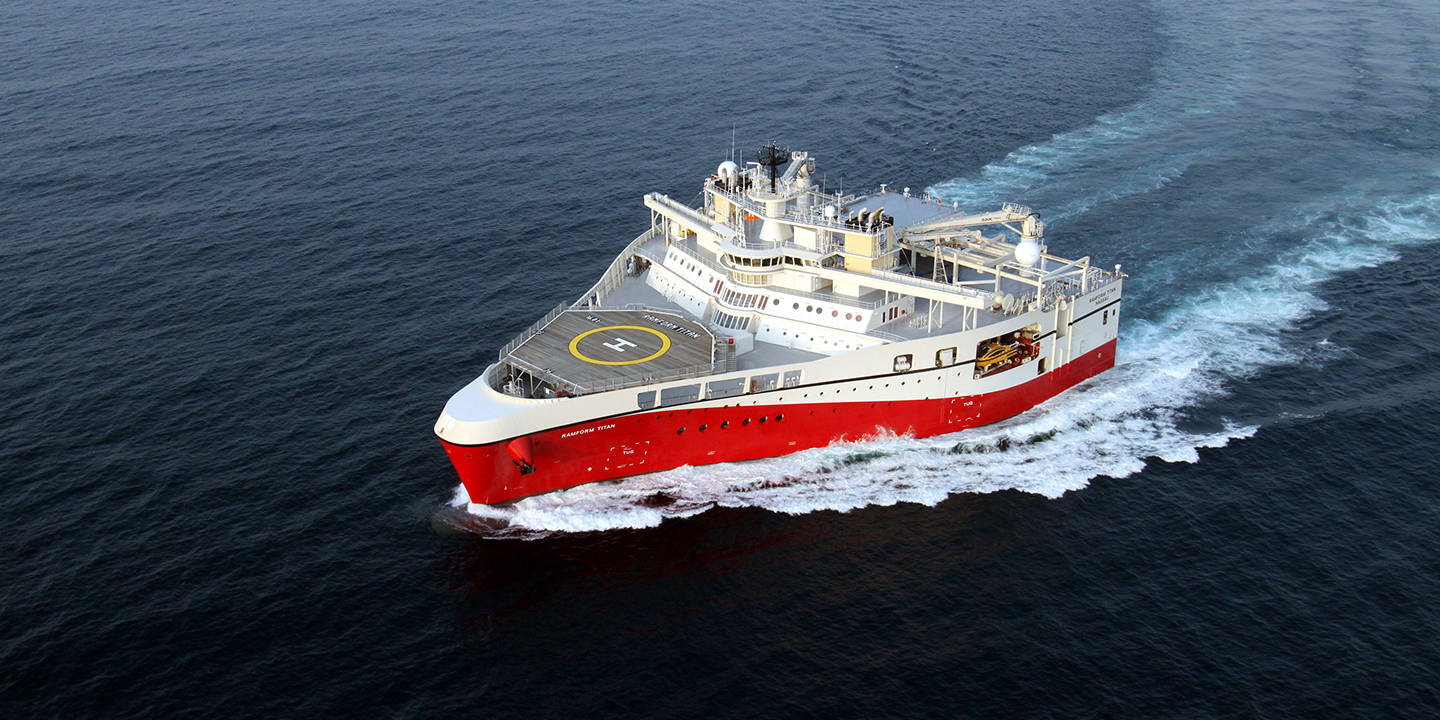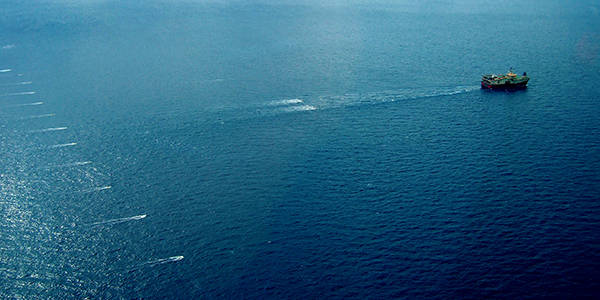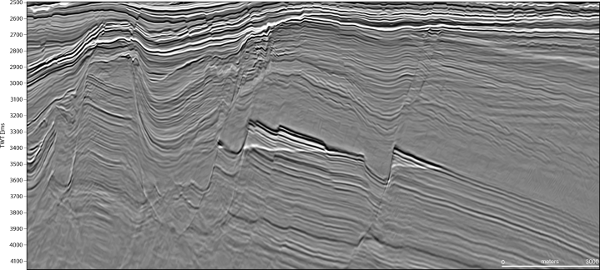By acquiring and analysing seismic data, it is possible to build up an image of the geological structures under the Earth's surface. Once structures that may contain petroleum deposits have been identified, the next step is to drill an exploration well.
In a seismic survey, sound pulses are emitted into the rock formations below the seabed. The sound waves are reflected back to sensors that are either placed on the seabed or towed behind a seismic vessel.
Seismic data has to be processed before geologists can study the imaged conditions under the seabed.
There are several categories of seismic surveys:
- In 2D surveys, the data are collected by a single sensor cable. This provides a relatively low resolution image of the underground, and is used for reconnaissance in new exploration areas.
- In 3D surveys, seismic data are collected by several parallel sensor cables, providing a three-dimensional and more detailed image of the subsurface. This is used in the exploration/appraisal phase.
- 4D surveys consist of repeated 3D surveys of the same area in order to detect any changes in a reservoir over time as a result of production or injection. These surveys are conducted in producing fields.
The Norwegian Offshore Directorate is responsible for mapping before an area is opened for petroleum activities. The mapping includes the acquisition and analysis of seismic data.
The Norwegian authorities have been collecting seismic data in areas of the continental shelf that are not open for oil and gas activities since 1969. This is a task the Norwegian Offshore Directorate performs on behalf of the Norwegian state.
All seismic surveys in connection with petroleum activities on the Norwegian continental shelf must be authorised by a production or exploration licence.
Production licences are awarded by the Ministry of Energy through the regular licensing rounds. A production licence applies to a specific area and grants exclusive rights to undertake oil and gas activities in the area.
Exploration licences are awarded by the Norwegian Offshore Directorate for areas of the Norwegian continental shelf that are open for petroleum activities but where no production licence has been awarded. They do not grant exclusive rights to petroleum activities in the specified area.
Marketable seismic data is acquired for the purpose of submitting the data for sale to a third party, ref. "multiclient seismic". These surveys are carried out by seismic companies that have been awarded exploration licences, but normally do not themselves apply for production licences.
Acquired seismic data are reported to the Norwegian Offshore Directorate under section 20 of the Resource Management Regulations. The data are managed in accordance with section 85 of the Petroleum Regulations on administrative procedures and the duty of secrecy/release of data.
To inform other users of the sea, all seismic surveys must be reported to the Norwegian Offshore Directorate no later than five weeks prior to commencement. Notification is submitted electronically via the Norwegian Offshore Directorate’s website. When the notification has been registered, copies are automatically sent to the Directorate of Fisheries, the Institute of Marine Research and the Norwegian Joint Headquarters.
According to current practice, these agencies provide expert advice on for example spawning, fishing and military activities in the specific area. This information is then transmitted to the licensee by the Norwegian Offshore Directorate.
More information on planned, ongoing and completed seismic surveys is also published on the Norwegian Offshore Directorate’s website.
To contribute to a smooth coexistence between fisheries and seismic data acquisition, the petroleum regulations require any vessel engaged in seismic surveying to have a fisheries expert on board. The fisheries expert must have completed an approved course and be certified by the Norwegian Offshore Directorate.
In recent years, a significant amount of other geophysical data has been acquired. An example is electromagnetic data, so-called CSEM data (Controlled Source Electro-Magnetic).


